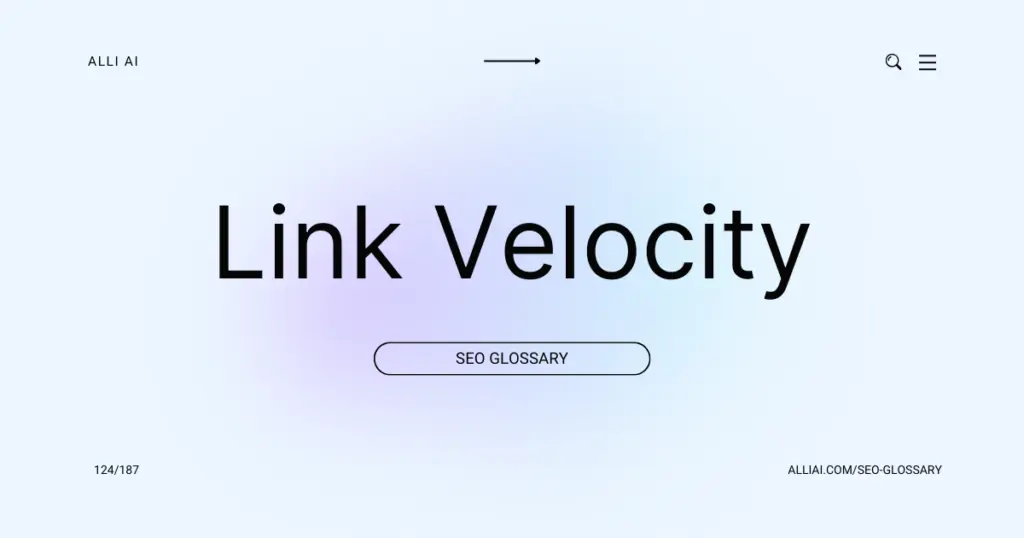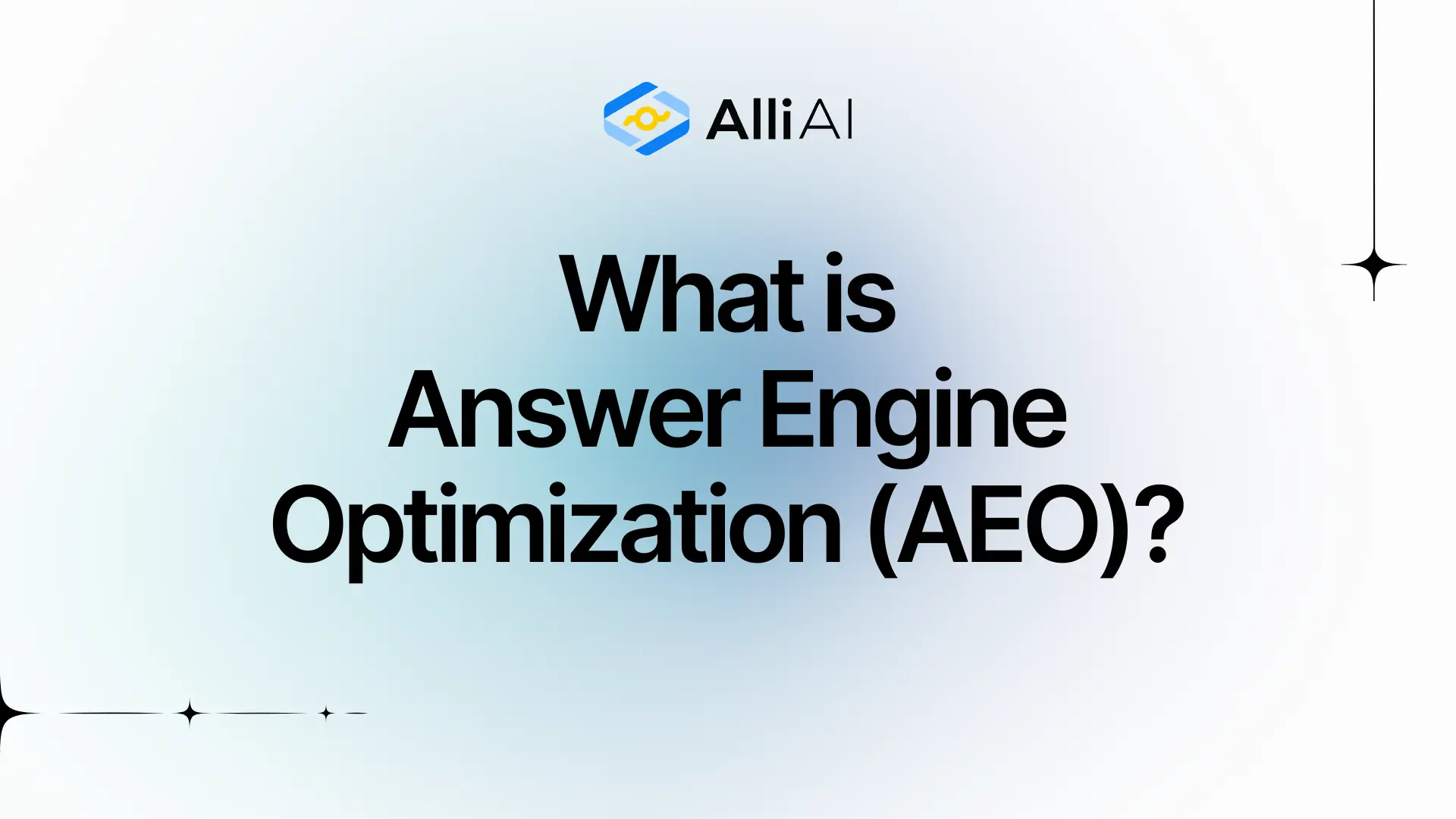What Does Link Velocity Mean?
Link velocity refers to the rate at which other websites create links to your site over time. In simpler terms, it’s how quickly your website gains new backlinks. High link velocity can suggest to search engines that your site is becoming more popular or relevant, potentially affecting your SEO rankings.
Where Does Link Velocity Fit Into The Broader SEO Landscape?
Link velocity refers to the rate at which a website acquires backlinks over time. In SEO, monitoring link velocity is important because it can impact a site’s search engine rankings. Rapid increases in backlinks can signal manipulative link-building practices to search engines, potentially leading to penalties. Conversely, a steady acquisition of quality backlinks shows natural growth, which can enhance a site’s authority and ranking. Link velocity is a factor in algorithms used to detect spammy behavior and assess the trustworthiness and authority of a website. Thus, managing link velocity by acquiring high-quality backlinks at a consistent, natural pace is crucial for long-term SEO success.
Real Life Analogies or Metaphors to Explain Link Velocity
Link velocity is like planting seeds in a garden. If you plant too many seeds too quickly in one spot, it looks unnatural and chaotic, potentially stifling growth. Conversely, planting seeds steadily and thoughtfully over time leads to a lush, organic growth of plants. Similarly, acquiring too many links too quickly can seem artificial and might signal manipulative tactics to search engines, whereas consistently gaining links over time appears more natural and boosts your website’s credibility and ranking.
How the Link Velocity Functions or is Implemented?
Link velocity refers to the rate at which backlinks to a website are acquired over time. Its implementation in SEO primarily revolves around monitoring and strategy optimization:
1. Tracking Tools Setup: Utilize SEO tools and software like Ahrefs, SEMrush, or Moz to track incoming links and their growth. These tools provide data about new backlinks, lost backlinks, and the net growth of backlinks.
2. Analysis of Current Link Growth: By assessing the current link growth rate, determine whether the link acquisition pace is steady, increasing, or declining. This includes evaluating the type and quality of backlinks.
3. Comparison with Competitors: Analyze competitors’ link velocity to understand the industry norm. This involves looking at both direct competitors and broader industry players.
4. Adjustment of Content Strategy: Depending on the findings, adjust the content creation and promotion strategy to either accelerate or decelerate the link acquisition. This may involve more proactive content marketing, PR campaigns, or community engagement.
5. Natural Link Building: Focus on generating content that naturally attracts backlinks over time, rather than engaging in aggressive link acquisition tactics that might result in a spammy link profile.
6. Monitoring Link Relevance and Authority: Pay attention not only to the quantity but also to the quality and relevance of the incoming links. Prioritize getting links from high-authority sites relevant to your niche.
7. Regular Reporting: Keep regular metrics and reporting to observe the impact of changes in link velocity on SEO performance, particularly on search engine rankings and organic traffic.
By continuously monitoring and adjusting strategies based on link velocity, you can effectively manage how your website acquires backlinks, which is a crucial factor in SEO success.
Impact Link Velocity has on SEO
Link velocity refers to the rate at which a website acquires backlinks over time. When it comes to SEO performance and rankings, a consistent, natural rate of link acquisition is typically viewed favorably by search engines like Google. It suggests that the website is growing in popularity and relevance gradually, attracting links from various sources in a manner that appears organic and non-manipulative.
A sudden spike in link velocity, especially if the links are of low quality or from questionable sources, can negatively impact SEO. Search engines might interpret rapid link acquisition as manipulative behavior, possibly part of a link scheme aimed at artificially boosting the site’s ranking. This can lead to penalties or a drop in rankings.
Conversely, a sharp decline in link velocity can signal that a website is becoming less relevant or losing authority, which might also adversely affect SEO.
For user experience, while link velocity itself doesn’t directly impact how users interact with a site, the implications of how it affects search engine rankings can indirectly influence user experience. Higher rankings can lead to more visibility and traffic, potentially improving user engagement and satisfaction with the content.
SEO Best Practices For Link Velocity
1. Audit Your Current Backlink Profile
– Use tools like Ahrefs, Moz, or SEMrush to analyze your current backlink profile.
– Identify the average number of links gained over the past 6-12 months.
2. Establish a Baseline
– Calculate the monthly average of new inbound links based on the data from your audit.
– Identify any significant spikes or drops and understand the context (e.g., a viral content piece or a lost link from a major site).
3. Set Realistic Goals for Link Acquisition
– Based on your baseline, set a monthly target for new backlinks that reflects steady, incremental growth.
– Avoid unrealistic spikes in link acquisition to prevent potential penalties from search engines.
4. Create a Content Calendar
– Plan and schedule high-quality, linkable content that can naturally attract backlinks.
– Include diverse formats such as blogs, videos, infographics, and reports.
5. Conduct Competitor Analysis
– Regularly review key competitors’ backlink growth and strategies.
– Identify link-building opportunities they are using that you can adopt.
6. Implement a Diverse Link Building Strategy
– Use a mix of techniques such as guest blogging, broken link building, and creating shareable content.
– Focus on acquiring links from high-authority websites.
7. Monitor Progress Regularly
– Set up monthly reviews to assess the number of new links acquired.
– Adjust your strategies based on the pace of your link velocity compared to your goals.
8. Engage in Community and Network Building
– Participate in industry forums, social media groups, and other community platforms to increase visibility and natural link acquisition.
– Build relationships with influencers and bloggers in your niche.
9. Leverage PR and Media Outreach
– Coordinate with PR teams to ensure mentions in press releases and news articles include backlinks.
– Craft compelling stories or data studies that attract media attention and backlinks.
10. Review and Optimize Anchor Text
– Analyze the diversity and relevance of anchor texts in your backlink profile.
– Aim for natural-looking anchor text distribution that improves relevancy and enhances value.
11. Analyze and Adjust
– Continuously analyze the impact of your link-building efforts on your SEO rankings and site traffic.
– Refine strategies as necessary to maintain a natural and effective link velocity.
Common Mistakes To Avoid
1. Inconsistent Link Acquisition Rates: Abrupt spikes or drops in the rate at which you acquire backlinks can appear manipulative to search engines, suggesting artificial link-building activities. Maintain a consistent, natural pace in acquiring new links.
2. Overemphasis on Quantity Over Quality: Prioritizing the volume of links over the quality can lead to a poor backlink profile, attracting penalties from search engines. Focus on acquiring high-quality links from reputable, relevant sources.
3. Neglecting Anchor Text Diversity: Using the same anchor text repeatedly can trigger spam filters in search engine algorithms. Ensure a diverse range of natural, relevant anchor texts in your links.
4. Ignoring Link Type Variation: Only acquiring one type of link, such as only follow or no-follow, or only from articles and ignoring other types like directories, forums, and more, can look suspicious. Aim for a varied backlink profile.
5. Focusing Solely on High PageRank Sites: Exclusively targeting high PageRank sites for links can lead to an unnatural backlink profile. Include a balanced mix of sites in your link-building efforts.
6. Timeframe Ignorance: Rapid acquisition of links in a short timeframe, especially for a new website, can signal to search engines that the links are not being acquired naturally. Spread out link acquisition over a longer period.
7. Not Monitoring Link Sources: Failing to monitor where links are coming from can lead to bad or toxic backlinks, which harm your site’s reputation. Regularly audit your backlink sources and disavow any harmful links.
8. Depending Solely on External Links: Focusing only on external links and neglecting internal linking can limit SEO effectiveness. Balance your strategy with a strong internal linking structure.
9. Automated Link Building Tools Misuse: Using automated tools without proper strategy can result in unnatural link patterns recognized by search engines. If using tools, ensure they allow for randomization and natural pattern generation.
10. Ignoring Competitor Link Velocity: Not analyzing the link velocity of competitors in your niche can result in an unrealistic understanding of what is a natural rate of link acquisition in your industry. Regular competitor analysis can guide your own link-building pace.






